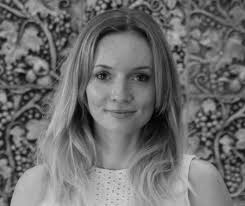Marie-Louise Lillywhite
Thesis: The Counter-Reformation and the Decoration of Venetian Churches 1563-1610
Supervisor: Louise Bourdua
Resarch Summary
My research examines the effects that the religious changes heralded by the Counter (or Catholic) Reformation had on the decoration of churches in Venice from the date of the closure of the Council of Trent in 1563, to the turn of the century. Whilst scholarly attention has for the most part drawn links between central Italian art and the contemporary religious climate, the same has not been done for the Serenissima. This is in part owing to the traditional view that Venice was resistant to reform, of a secular state that tolerated heresy and was fiercely anti-Papal. While politically Venice shielded her independence from the power of the Papacy, she responded to the Tridentine decrees relatively swiftly, and played an important role throughout the Cinquecento as a centre for religious renewal.
I attempt to answer key questions about the manner in which Venetian artists of the period responded to, or indeed ignored, the call for a new visual language based on principles of clarity, one that would excite the viewer to piety whilst removing ‘every supersitition’ and ‘all lasciviousness’ from sacred art. How did this impact artistic freedom? To what extent were Venetian artists and patrons affected by the contemporary religious changes? How did the Church in Venice enforce guidelines relevant to the decoration of the ecclesiastical space? These questions will be confronted through a series of case studies. Drawing on extensive archival research and visual analysis, the thesis will examine the embellishment of a parish church, San Giacomo dall'Orio; the Jesuit's first church in Venice, Santa Maria dell'Umiltà; a votive church, the Redentore; and the renewal of San Giorgio Maggiore, officiated by the Benedictines. This will encompass works by artists such as Paolo Veronese, Jacopo Tintoretto, Jacopo Bassano and Palma il Giovane, as well as key patrons such as the Venetian State, the Jesuit Order and parish priests, in order to investigate the role of artist and patron in the creation of a new kind of sacred art particular to the Venetian Republic in the latter half of the 1500s.
Research Interests
Tintoretto, Jacopo and Francesco Bassano, Palma il Giovane, Veronese
Religious Reform in the Veneto
The Arts of the Jesuit Order
Background
I completed both my undergraduate and my masters degrees at Warwick (double distinction) which meant I was able to spend extended periods of study in Venice. I was funded at MA level by the AHRC and in September 2009 I undertook my doctoral study, thanks again to a grant provided by the AHRC. In addition to this full-funding, I have won research grants from the Gladys Krieble Delmas Foundation, two travel grants for archival research from the AHRC and a place on the Newbury Mellon Venice Summer School, 'Family Values: Locating the Family in the Early Modern Italian Workshop.’

